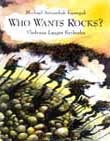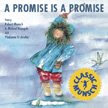
Michael Arvaarluk Kusugak (auth)
Vladyana Langer Krykorka (ill)
Annick Press 1998
Ages 4-7 40 pages
softcover ISBN 10: 1550374524
ISBN 13: 9781550374520
hardcover ISBN 10: 1550374532
ISBN 13: 9781550374537
In Arctic Stories, Michael Kusugak recounts three stories, from his own childhood, through the eyes of Agatha, a young Inuit girl.
The first, Agatha and the Ugly Black Thing, was inspired by an event that happened in Kusugak’s community in 1958. It was then that a large helium filled airship, called a ZPG-2, carrying a scientific expedition, passed over the settlement near Repulse Bay. The people were terrified of the black aircraft that looked like a bomb. They began to run, panicked. Kusugak uses this event as the driving force in a story that describes, in brilliant detail, the awakening of the Arctic, in spring, substituting a little girl, for himself. This sleepy little girl, Agatha grows tired of running and becomes angry. She shouts at the ugly black thing which goes away. She is a hero, but being a typical child, she is too sleepy to walk back, and is carried home, sleeping. Agatha and the Ugly Black Thing is concluded with my favourite of Vladyana Langer Krykorka’s illustrations- Agatha nestled in her father’s arms, sucking her thumb.
The second story, Agatha and the Most Amazing Bird, sprang out of another childhood memory of Kusugak’s. When he was a young boy, his grandmother befriended a raven by feeding it. As a result, the bird felt an attachment to her. Again, it is Agatha, not Kusugak, who moves this story. Anyone interested in birds will revel in this tale. Kusugak gives an amazing amount of detail, following not only the physical changes undergone by the raven throughout the seasons, but also the amazing spectar of the many migratory birds, as well. I found it hard to read because my daughter, Koogiook (Swan) could not stop asking questions. I love a story that ignites wonder and curiosity.
The final story, Agatha goes to School, is based on a less happy time in Kusugak’s life. Agatha is taken by plane, along with two of her friends (who were named for two of Kusugak’s real life classmates) to the residential school at Churchill. The realities of residential school are touched on in a very delicate manner that make it easy for young children to understand that it was not always a kind and loving place, without giving them nightmares or scaring them from going to school. In this tale, Agatha decides that she would rather ski than skate, having had little success on the ice, even though her friends would rather skate. It turns out lucky that she has chosen to bring skis when Father Fafard (a well liked priest) falls through the ice of the RCMP Lake. The skis are resourcefully used to rescue the drowning priest. A plethora of images from Kusugak’s childhood, are present in this story- from the nuns that sang like angels (but were definitely not angels) to the RCMP members hacking ice from the lake for their own use, and the talented skills of Father Fafard on a pair of skates. This is a relevant story for your children (if you are Canadian) as they are likely to be exposed to the concept of residential school, over the next few years. With the recent (and very long overdue) apology by Stephen Harper to the students of the residential schools, and a truth a reconciliation committee slated, the media will be ripe with discussions of the subject. This truly is an important read for anyone, regardless of heritage. It may be a part of our cultural and historical experiences as Canadians, but speaks to the experiences of humanity as a whole. If you are a teacher, this is a great story to use in your classroom, as no doubt the social sciences curriculum will be expanded, considerably, to include more education about residential schools.
This set of stories is a wonderful resource for any parent or teacher interested in the Arctic, the Inuit, or even just another way of life. Arctic Stories constructs a (vanishing) world that is filled with fears of technology, wonder at the abundance of Mother Nature’s fauna, and heartache at the hands of those who would consider themselves more civilized. You cannot help but come away from reading Arctic Stories, with a sense that you have been given a very special peek into another human’s collection of experiences. We can be grateful, once again, to Kusugak for pulling back the curtains and turning on the light.





